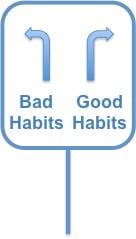The best safety professionals that I've worked with like safety. They read all the right safety magazines and go to all the right safety conferences. But that's not...
Forget The Great Resignation. It's Time for the GREAT REIMAGINATION
There has been a lot of talk lately about The Great Resignation. A global trend that is seeing a significant number of employees leave their job during the pandemic. Many people believe it’s a war between employees who want to work from home and bosses who want to shepherd everyone back into the office.
In reality, the pandemic has highlighted what we really want for work. It has helped us see what we like and don’t like about our jobs. And at the top of people’s wish list are companies with healthy cultures that empower employees to work autonomously and flexibly. Lead by executives who provide clear expectations and directives and who communicate regularly. Employees are now reassessing what’s important for them.
Around the world, The Great Resignation isn’t looking as big as what’s going on in America where the term originates. But it is changing the dynamics between employer and worker.
Currently, the whole discussion is around what companies need to do to stop people leaving. It feels like a zero-sum game. What is missing from the conversation is rethinking how to improve the relationship between the company and employees.
It involves asking: What if this upheaval is an ideal opportunity to reimagine the relationship between employees and the company?
Instead of worrying about what needs to done to keep people, the real focus needs to be on creating the right environment where people want to stay. The truth is how we work has changed and so has our relationship to work. It is time for a refresh.
As we slowly move from survive to thrive, we now have a tremendous opportunity to bridge what has been and what needs to be. People want meaningful work, better work life balance, opportunities for learning and enjoyable colleagues.
Rethinking our working norms means looking at how we can build a more flexible, engaged and resilient workforce.
And it all starts with reimagining the future. The new interactions, behaviours, communication styles, learning routines and working norms that are required for the business to succeed. In other words, fostering a new culture with new ways that will make your organisation a great place to work.
It involves your leadership team asking themselves:
- What do we want in this new employee-employer relationship? What’s really going to work for us?
- If we were to wipe the slate clean, what is the best culture we can create that optimises our business success and the people within it?
- What are the behaviours and interactions we need to champion for our customer success?
- How can we create a place where everyone can use their innate talents, do work they enjoy with people that support them?
- What can we do to help people see the value and meaning in their work?
Succeeding Together, Not Alone
Creating the right environment where people want to stay isn’t something you can do in a couple of leadership team meetings. Rethinking our working norms means new behaviours that have to be lived and breathed by the top team.
How the leadership team behaves and communicates is manifested and amplified throughout the firm - for better or worse. Employees check for signs of alignment in the leadership team based on whether executives know what their peers are working on, if they consider and include them in decisions and promote the same messages. If employees don’t see that the cost is a loss of confidence and trust in the decisions made by the leadership team to lead the organisation.
Leadership team alignment is critical to your success. Research by McKinsey discovered a 1.9 times increased likelihood of above-median financial performance when the top team is working together toward a common vision.
It also impacts employee turnover. People are leaving jobs not just because they are burnt out, but other top reasons include leadership quality perceptions and leadership alignment.
To succeed in today’s fast-changing world requires an energetic leadership team that is incredibly focused on delivering the right customer outcomes. Uniting together as a harmonised collective - prioritising, communicating and co-ordinating work in alignment with a clear vision.
Reimagining the relationship between your employees and your company means your leadership team need to be all onboard with the changes. And that’s not going to happen if you all have different ideas on what the new employer and employee relationship looks like.
It requires asking the question: How aligned is your leadership team? Does everyone agree on the strategy? Do leaders work together to solve problems or does the CEO have to step in and fix conflict? Until you have improved your leadership team interactions, it will be difficult to create the right working environment for your organisation.
Optimising your culture starts with creating a high functioning leadership team. This is how you will make your company healthy and attract people to stay within your organisations. This is the difference between having your pick of top candidates for jobs or having to choose from the mediocre.
As we head into a brand new year, now is the time to work with your leadership team - to realign behaviours and reimagine your workplace culture. The good news is that both are inextricably linked - working on both at the same time is important.
Change can be frightening. Don’t let The Great Resignation scare you. We can look at employees resigning as a problem or we can reframe it as an opportunity to create the work environment the way we want.
Perceiving this time as The Great Reimagination provides you and your leadership team with a powerful lens to reengineer a workplace that is fairer, more compassionate, energetic and creative. A place where employees love their job and are healthy and productive. A workplace designed for the twenty-first century not the twentieth.
And it starts with asking yourself the questions: What do we need to do to optimise our culture, so that people want to stay because they are thriving?

